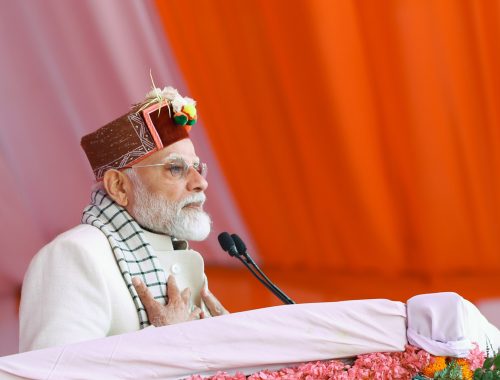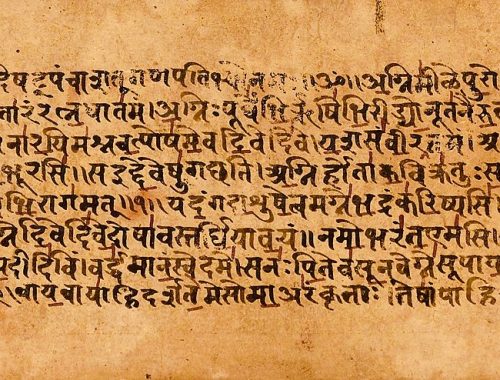
This Indian Temple Contains ₹1 Lakh Crore Treasure (And You Can Visit It)
The Sree Padmanabhaswamy Temple in Thiruvananthapuram, Kerala, holds the distinction of being the world’s wealthiest religious institution. This 16th-century temple contains treasure valued at over ₹1 lakh crore, making it richer than many multinational corporations and even some countries’ GDP.
In this article, we will cover the complete story of this incredible treasure discovery, the historical significance of the findings, the mysterious unopened vault that still holds secrets, and everything you need to know about visiting this remarkable temple.
The Discovery That Shook India
In 2011, the Supreme Court of India ordered the opening of secret underground vaults in this ancient temple. The archaeological team that entered these chambers discovered one of the largest treasure hoards in recorded history.
The inventory revealed:
- Pure gold artifacts weighing over 500 kilograms
- Diamond and precious stone jewelry dating back centuries
- Ancient coins from multiple Indian kingdoms
- Ceremonial objects crafted by master artisans
- Religious idols made entirely of gold
The official valuation reached ₹1 lakh crore (approximately $12 billion USD), establishing this temple as the world’s richest religious institution.
What Makes This Temple So Special?
The Mysterious Architecture
The Sree Padmanabhaswamy Temple isn’t just rich – it’s architecturally stunning. Built in the traditional Kerala style, the temple features:
- Intricate wooden carvings that tell stories from ancient scriptures
- Gopuram towers that reach toward the sky like golden fingers
- Secret chambers that remained sealed for centuries
- Underground vaults designed with ancient security systems
The Deity That Guards the Treasure
Lord Padmanabha (a form of Lord Vishnu) lies in eternal sleep on the serpent Anantha. Local beliefs say the deity himself protects this massive treasure. The 18-foot-long idol, covered in pure gold, watches over riches that kings and emperors could only dream of.
The Unopened Vault B: India’s Greatest Mystery
Here’s where the story becomes even more significant. While five vaults (A, C, D, E, F) were opened and catalogued, Vault B remains sealed due to legal and traditional concerns.
The reasons for keeping Vault B sealed are based on both legal procedures and traditional beliefs:
The Historical Context of Vault B
- Ancient inscriptions on the vault door contain Sanskrit warnings
- Traditional guardian symbols including serpent motifs are carved on the entrance
- The Travancore royal family maintains that specific rituals must be followed before opening
- The vault’s mechanism appears to be different from conventional locks, requiring specialized knowledge
Archaeological estimates suggest Vault B could contain additional treasures potentially worth ₹1 lakh crore or more, effectively doubling the temple’s known wealth.
How This Treasure Came to Be

Donations Across Centuries
This wasn’t accumulated overnight. For over 500 years:
- Travancore royal family donated their entire wealth
- Devotees from across India offered gold and precious stones
- Local merchants contributed their most valuable possessions
- Ancient rulers gifted ceremonial items and crowns
The Smart Investment Strategy
The temple trustees weren’t just collectors – they were smart investors. They:
- Bought more gold when prices were low
- Commissioned master craftsmen to create artistic pieces
- Preserved everything in perfect conditions
- Never sold anything, only accumulated
Planning Your Visit: What You Need to Know
Entry Requirements
- Dress code: Traditional Indian attire mandatory
- Photography: Strictly prohibited inside
- Entry timings: 3:30 AM to 12:00 PM and 5:00 PM to 8:00 PM
- Special darshan: Available for ₹50 extra
What You’ll See
While you can’t see the actual treasure (it’s locked away safely), you can:
- Witness the magnificent golden idol of Lord Padmanabha
- Experience the spiritual atmosphere where kings once prayed
- Marvel at the ancient architecture
- Feel the energy of centuries-old devotion
Getting There
- Nearest airport: Trivandrum International (6 km away)
- Railway station: Trivandrum Central (1 km away)
- Best time to visit: October to March (cooler weather)
The Bigger Picture: What This Means for India

Economic Impact
This discovery put India on the global map as a country with hidden wealth. It showed the world that:
- Indian temples are repositories of unimaginable riches
- Ancient India was incredibly prosperous
- Cultural preservation can have massive economic value
Tourism Boost
Since the discovery, Kerala has seen:
- 300% increase in heritage tourism
- International attention from travel documentaries
- Archaeological interest from researchers worldwide
Other Incredibly Rich Indian Temples
While Padmanabhaswamy takes the crown, India has other treasure-filled temples:
Tirumala Tirupati (Andhra Pradesh)
- Annual income: ₹3,000 crore
- Gold reserves: 9,000 kg
- Daily visitors: 75,000
Also Read: APSRTC Adds Tirumala Hill Route to Free Bus Travel Scheme for Women
Shirdi Sai Baba Temple (Maharashtra)
- Annual income: ₹350 crore
- Famous for: Cash donations from devotees worldwide
Vaishno Devi (Jammu & Kashmir)
- Annual income: ₹500 crore
- Unique feature: Helicopter services funded by temple wealth
The Lessons Hidden in This Story
Ancient Wealth Management
Our ancestors knew something about wealth preservation that we’re only now understanding:
- Diversified assets: Gold, gems, art, and land
- Long-term thinking: Accumulated over centuries, never spent
- Community investment: Wealth that belonged to society, not individuals
- Cultural value: Treasures that increase in worth over time
Modern Implications
This discovery teaches us:
- India’s historical prosperity was far greater than textbooks suggest
- Temple economy played a crucial role in ancient finances
- Cultural preservation can have unexpected economic benefits
- Hidden wealth might exist in many more locations
The Controversy: Who Controls the Treasure?
The massive wealth has created ongoing debates:
The Royal Family’s Claim
The Travancore royal family argues:
- They’ve been traditional custodians for centuries
- Their ancestors donated the wealth
- They understand the spiritual significance better
Government’s Position
The Kerala government believes:
- Such massive wealth should benefit all citizens
- Professional management is needed
- Transparency is essential for public trust
Supreme Court’s Decision
The court has appointed a committee to:
- Ensure proper security and preservation
- Create detailed inventories
- Maintain the spiritual sanctity
- Provide public accountability
Visiting Tips for Maximum Experience
Best Photography Spots (Outside the Temple)
- Temple gopuram against sunrise/sunset
- Padma Theertham pond with temple reflection
- Traditional Kerala architecture of surrounding buildings
Nearby Attractions
- Kovalam Beach: 16 km away
- Napier Museum: 2 km away
- Kuthiramalika Palace: Walking distance
Local Food to Try
- Kerala sadhya on banana leaf
- Appam with stew
- Fresh coconut water from temple vendors
The Future of Temple Treasures
Technology and Preservation
Modern techniques are being used:
- Digital cataloging of every item
- Climate-controlled storage for preservation
- Advanced security systems for protection
- 3D scanning for research purposes
Research Opportunities
The treasure offers insights into:
- Ancient Indian metallurgy and craftsmanship
- Historical trade routes and connections
- Economic systems of medieval India
- Artistic traditions across centuries
Why This Story Matters Today
In a world obsessed with new money and startups, the Padmanabhaswamy Temple treasure reminds us:
- True wealth is built over generations, not overnight
- Cultural values can preserve riches better than banks
- India’s heritage contains surprises that can shock the world
- Spiritual devotion created economic miracles
Final Thoughts: Your Turn to Witness History
Standing before the Sree Padmanabhaswamy Temple, you are not just visiting a religious site. You are witnessing proof of India’s incredible past, a civilization so prosperous that a single temple could accumulate wealth worth ₹1 lakh crore.
The next time someone questions India’s historical wealth or asks about our “poor” past, just tell them about this temple. Better yet, take them there. Let them see with their own eyes the golden proof of our ancestors’ prosperity.
Ready to plan your visit? The treasure awaits, the mystery continues, and the doors of India’s richest temple are open to you. Just remember – while you can’t take photos of the treasure, you’ll definitely take home memories worth more than gold.
(All images taken from keralatourism.travel)
Have you visited any incredibly wealthy temples in India? Share your experiences in the comments below! And if you found this story fascinating, share it with friends who love discovering India’s hidden treasures.
Khushi Jha
I am Khushi Jha, a proud alumna of Delhi University with a degree in History and Political Science. My fascination with the events that have shaped our world drives me every day. Currently, I am pursuing my Master’s in History, diving even deeper into global dynamics and the incredible heritage of India. I firmly believe that India's rich heritage deserves wider recognition. I strive to bring its stories to the forefront, ensuring they are celebrated and acknowledged on a global stage. I have written extensively across various niches, including fashion, health, lifestyle, real estate, hospitality, amongst others. In my free time, you’ll find me immersed in books, both fiction and non-fiction, or simply enjoying some much-needed rest.
You May Also Like

PM Modi’s Mission to Revive Villages Abandoned During 1962 India-China War
March 8, 2025
PM Modi Invites Citizens to Share Ideas for ‘Mann Ki Baat’ on 29th September 2024
September 17, 2024


